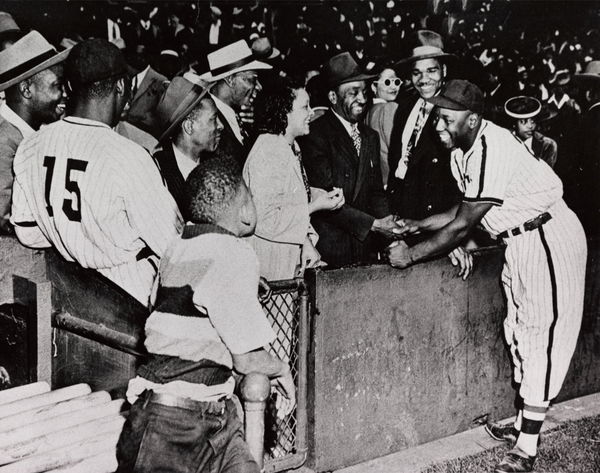

The sands of time have finally shifted in the hallowed halls of baseball history. In a monumental decision taken this Tuesday, MLB has officially integrated the statistics of the Negro Leagues into its record books, rewriting the narrative of America’s pastime and illuminating the brilliance of players once unjustly relegated to the shadows.
At the forefront of this seismic shift is Josh Gibson, the legendary catcher whose name now echoes alongside the likes of Babe Ruth and Ty Cobb. Even though Cobb has been a longtime record holder for average batting, Gibson’s career batting average (.372) knocks him out while as for slugging percentage (.718) and on-base plus slugging percent (OPS) (1.177) eclipses even the mighty Ruth’s. Gibson’s single season records are nothing short of extraordinary: OPS 1.474 in 1937 and a BA of .466 in 1943 which consolidates his name among the greatest hitters who has ever played baseball.
BREAKING: Negro Leagues statistics will officially be integrated into MLB database on Wednesday. Negro Leagues legend Josh Gibson will become MLB record holder in multiple categories.
Story to come for @YahooSports on a monumental day in baseball’s history.
— Russell Dorsey (@Russ_Dorsey1) May 28, 2024
ADVERTISEMENT
Article continues below this ad
“When you hear Josh Gibson’s name now,” says Sean Gibson, Josh’s great-grandson, “It’s not just that he was the greatest player in the Negro Leagues, but one of the greatest of all time. These aren’t just Negro League stats. They’re major-league baseball stats.”
The recognition extends far beyond Gibson, encompassing over 2,300 Negro League players whose accomplishments are now woven into the fabric of MLB’s official history. This monumental undertaking was a testament to the tireless efforts of historians, writers, and statisticians, who meticulously unearthed box scores for 75% of Negro League games from 1920 to 1948.
This endeavor, however, was not without its challenges. The scattered and often incomplete nature of Negro League records, compared to MLB’s well-preserved archives, underscored the systemic disparities faced by these players. A 15-person committee grappled with the complexities of integrating these statistics, addressing questions of how to compare shorter Negro League seasons with MLB’s 162-game schedule. But as MLB historian John Thorn eloquently stated, “To deny the best Black players of the era their rightful place among all-time leaders would be a double penalty.”
Official statement from @nlbmprez Bob Kendrick on Negro Leagues statistics entering @MLB record. pic.twitter.com/hLoHXjbESu
— Negro Leagues Baseball Museum (@NLBMuseumKC) May 29, 2024
The statistical minimums applied to MLB will now extend to the Negro Leagues, ensuring a fair evaluation of players’ accomplishments. This means that rate stats like batting average and ERA, where Negro Leaguers often excelled due to the shorter seasons, will feature prominently. Dave Brown’s career ERA of 2.24 now ranks among the top in MLB history, while Satchel Paige’s 1.01 ERA in 1944 stands as the third-best single-season mark. Charlie “Chino” Smith’s .451 batting average in 1929 for the New York Lincoln Giants is a testament to the caliber of talent that thrived in that era.
The Negro Leagues’ enduring legacy and impact on baseball
The road to recognition was long and winding, marked by initial delays and disagreements over data acquisition. However, a deal was eventually struck with Seamheads, the organization behind the comprehensive Negro League Database, paving the way for swift progress and the ultimate’ integration of these statistics.
Negro Leagues legends such as Josh Gibson, Oscar Charleston, Buck Leonard, Charlie “Chino” Smith, Turkey Stearnes, and Mule Suttles have joined all-time and single-season Major League leaderboards. pic.twitter.com/xCVOEkdRBT
— MLB (@MLB) May 29, 2024
The impact of this decision reverberates through the record books. Hall of Famers like Oscar Charleston, Jud Wilson, Turkey Stearnes, and Buck Leonard now grace the top 10 all-time batting average list. George “Mule” Suttles, Stearnes, and Charleston are among the top sluggers in terms of career slugging percentage. In the on-base percentage category, Leonard, Charleston, and Wilson also find themselves among the elite.
ADVERTISEMENT
Article continues below this ad
The records of MLB Hall of Famers who played in the Negro League have been updated to reflect their complete achievements. Paige’s win total, for example, surges from 28 to 124, a testament to his dominance on the mound. Jackie Robinson’s career hit total increases to 1,567, while Minnie Miñoso surpasses the 2,000-hit milestone with 2,113.
A look at the career batting average leaders following the Negro Leagues stat integration with MLB! pic.twitter.com/bbIX43RAPo
— MLB Network (@MLBNetwork) May 29, 2024
ADVERTISEMENT
Article continues below this ad
This historic recognition is not merely an update of statistics; it’s a rectification of a historical injustice. It’s a tribute to the indomitable spirit of the Negro League, where players like Willie Mays honed their skills before breaking barriers in MLB. It’s a celebration of the extraordinary talent that flourished despite adversity.
As Ron “Schoolboy” Teasley, a former Negro League player, aptly stated, “Keep the memory of the Negro Leagues alive.” The integration of their statistics into MLB’s official records ensures that their legacy will forever be etched in the heart of baseball history, a testament to their enduring greatness.
ADVERTISEMENT
ADVERTISEMENT
ADVERTISEMENT
ADVERTISEMENT

